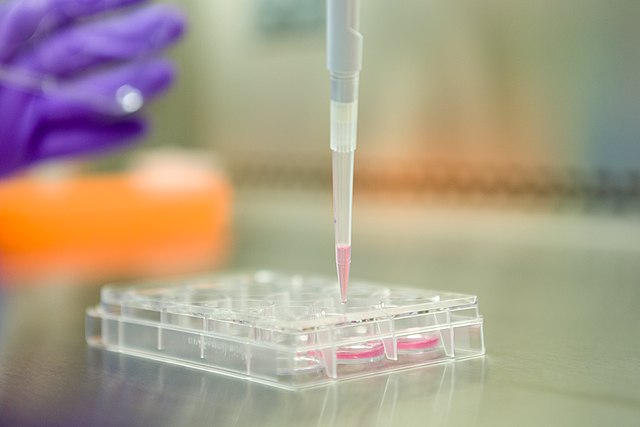
Scientists have created tiny living robots, called Anthrobots, from human cells that can move across a surface and encourage the growth of neurons.
The discovery is a starting point for the researchers’ vision to use Anthrobots as new therapeutic tools for regeneration, healing, and treatment of disease.
The research by Tufts University and Harvard University’s Wyss Institute builds on earlier work from some of the same scientists, who made the first living robots, or xenobots, from stem cells sourced from embryos of the African clawed frog.
“Some people thought that the features of the xenobots relied a lot on the fact that they are embryonic and amphibian,” said study author Michael Levin, Vannevar Bush professor of biology at Tufts’ School of Arts & Sciences.
“I don’t think this has anything to do with being an embryo. This has nothing to do with being a frog. I think this is a much more general property of living things,” he said.
“We don’t realize all the competencies that our own body cells have.”
While alive, the anthrobots were not full-fledged organisms because they didn’t have a full life cycle, Levin said.
“It reminds us that these harsh binary categories that we’ve operated with: Is that a robot, is that an animal, is that a machine? These kinds of things don’t serve us very well. We need to get beyond that.”
In the current study published in Advanced Science, Levin, along with PhD student Gizem Gumuskaya discovered that biobots can in fact be created from adult human cells, without any genetic modification and they are demonstrating some capabilities beyond what was observed with the Xenobots.
The discovery starts to answer a broader question that the lab has posed – what are the rules that govern how cells assemble and work together in the body, and can the cells be taken out of their natural context and recombined into different “body plans” to carry out other functions by design?
Human cells given a chance to reboot
In this case, they gave human cells, after decades of quiet life in the trachea, a chance to reboot and find ways of creating new structures and completing tasks. “We wanted to probe what cells can do besides create default features in the body,” said Gumuskaya.
Exactly how the Anthrobots encourage growth of neurons is not yet clear, but the researchers confirmed that neurons grew under the area covered by a clustered assembly of Anthrobots which they called a “superbot.”
“The cellular assemblies we construct in the lab can have capabilities that go beyond what they do in the body,” said Levin, who also serves as the director of the Allen Discovery Center at Tufts.
“It is fascinating and completely unexpected that normal patient tracheal cells, without modifying their DNA, can move on their own and encourage neuron growth across a region of damage,” said Levin. “We’re now looking at how the healing mechanism works, and asking what else these constructs can do.”
The advantages of using human cells include the ability to construct biobots from a patient’s own cells to perform therapeutic work without the risk of triggering an immune response or requiring immunosuppressants. They only last a few weeks before breaking down, and so can easily be re-absorbed into the body after their work is done.
In addition, outside of the body, Anthrobots can only survive in very specific laboratory conditions, and there is no risk of exposure or unintended spread outside the lab. Likewise, they do not reproduce, and they have no genetic edits, additions or deletions, so there is no risk of their evolving beyond existing safeguards.
See all the latest news from Greece and the world at Greekreporter.com. Contact our newsroom to report an update or send your story, photos and videos. Follow GR on Google News and subscribe here to our daily email!



